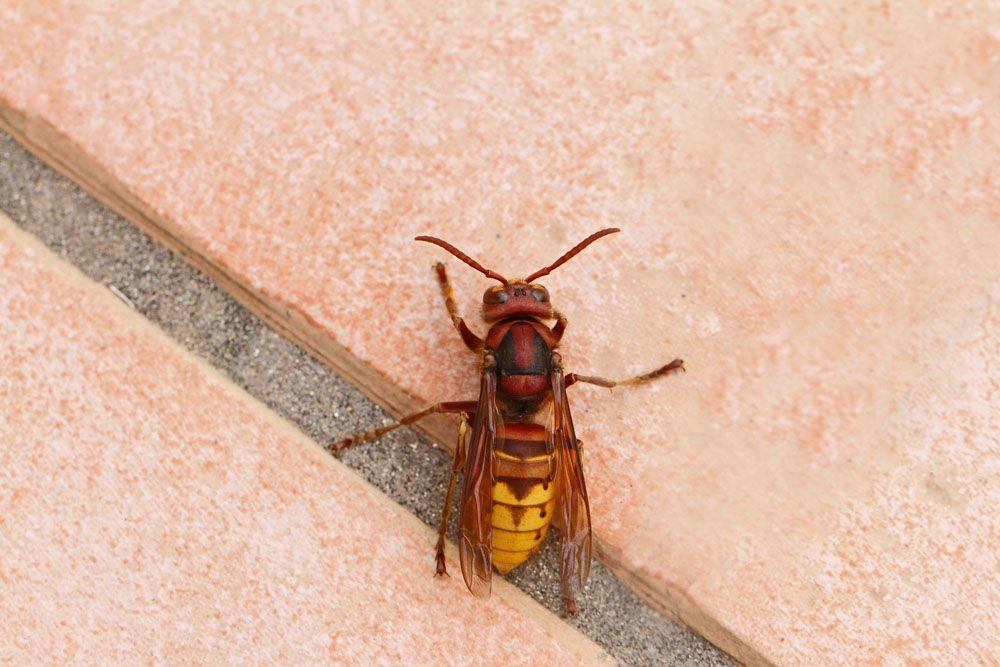
European Hornet – Vespa crabro germana
European Hornet: Appearance, Territory, Damage and Life Cycle
Latin Name: Vespa Crabro
Appearance: The European hornet (Vespa Crabro) is North America’s biggest social wasp. The European hornet is a large hornet that is around 1 inch in length. The head and thorax are dark reddish brown in hue, with deep yellow and brown black patterns on the abdomen. Vespa Crabro Germana belongs to the order Hymenoptera and the family Vespidae.
Hosts Plants: European hornets are drawn to light and have been observed continuously banging on illuminated windows at night. Fertilized European hornet queens hibernate over the winter. In the spring, they construct a nest from of chewed-up wood that they have gathered. The majority of wasps feed on live prey as well. The key distinction is that the hornet diet does not entail scavenging activities to the extent that a yellow jacket’s diet would. Hornets consume fallen fruit or remove the bark from trees to sip sap on occasion, although they bother picnics and human meals less frequently than other pests.
Territory: European hornets are found only in Europe and Asia. They were imported into North America from Central Europe and were first discovered in the 1840s. European hornets have subsequently expanded throughout the eastern United States, including the whole state of Pennsylvania.
Damage Insect Cause: European hornets have smooth stingers that allow them to strike repeatedly. Hornet stings contain venom, which causes the stings to pain, itch, or swell for around 24 hours. The risk of allergic responses from a European hornet sting is the same as with other insect stings. Because they remove the bark to get to the sap, European hornets may inflict significant damage to trees and plants. They also utilize bark fiber to construct their nests.
Life History and Habits: Hornets, like other wasps, bees, and ants, have a four-stage life cycle consisting of egg, larva, pupa, and adult. The life cycle of a hornet is identical to that of a common wasp. Newly mated queens hibernate over the winter and emerge in the spring to begin nest construction. They deposit eggs, which hatch into sterile female workers who take over nest construction and food collection for the growing larvae. Because wasps and hornets are not built to withstand low temperatures, they will perish in the late fall or early winter. The only ones that will survive are the mated queens, who will hole down someplace to hibernate until spring, when they will begin constructing a new nest.
